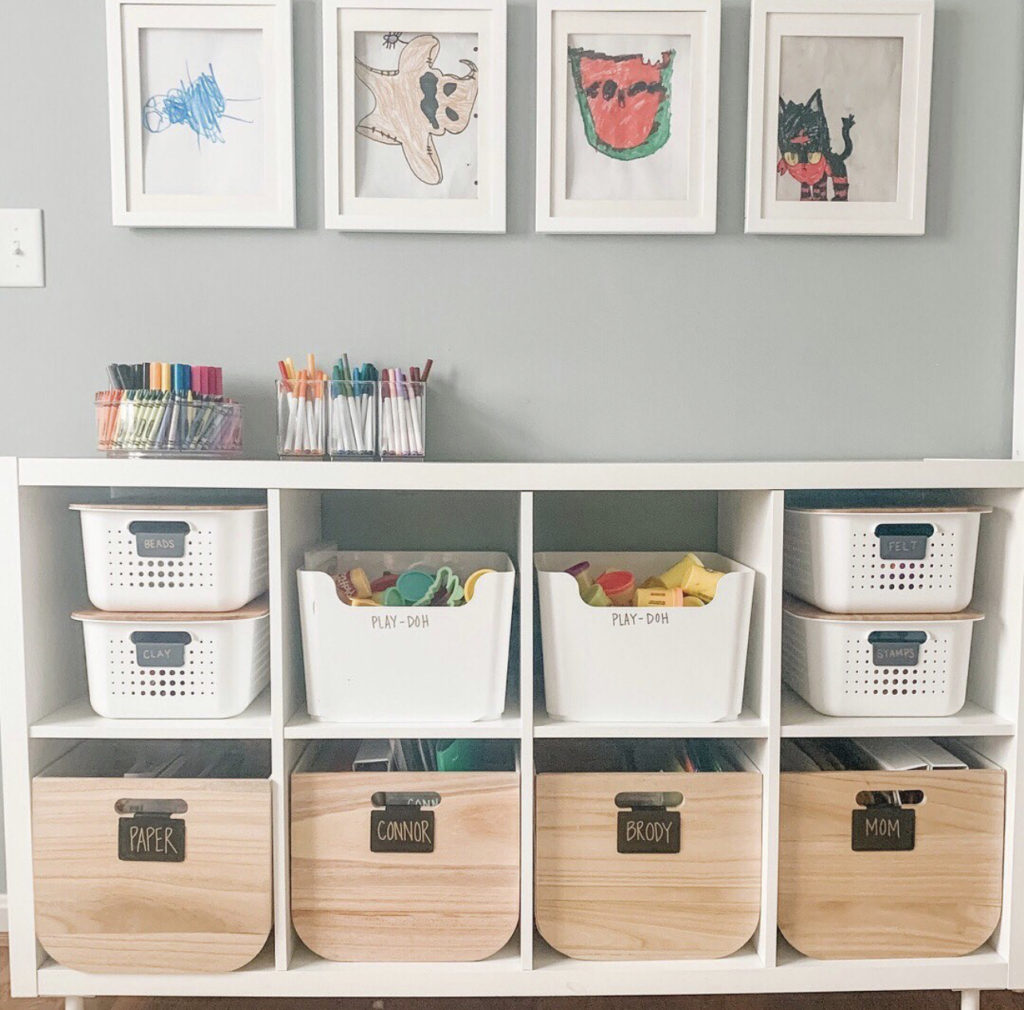4 Principles I Learned as a Teacher that I Apply to Organizing
 Since a young age, I’ve had a passion for keeping my life organized. I just feel better when my home, schedule, and even handbag are organized! On top of that, I have a degree in early childhood education and taught third grade + kindergarten for five years. Through my formal education and experience as an educator, I’ve learned many teaching principles that I’ve applied to my passion for organizing. These are just a few!
Since a young age, I’ve had a passion for keeping my life organized. I just feel better when my home, schedule, and even handbag are organized! On top of that, I have a degree in early childhood education and taught third grade + kindergarten for five years. Through my formal education and experience as an educator, I’ve learned many teaching principles that I’ve applied to my passion for organizing. These are just a few!
Principle 1: create zones
Just as my classroom had different spaces to promote different areas of learning, I’ve found it’s important to create zones in your home to organize like-items together. Set your playroom up with zones for reading, crafts, dress-up, gross motor play, etc.
In setting up zones, cube and bin storage is helpful for containing toys and promoting independence so that kids know where to put items away. Here are some key things to remember:
- keep bins at kid-level to make sure kids can see inside of bins and easily access their toys/supplies
- clearly labeling is key with word or picture labels keeping in mind the labels should be specific but not so specific that they’re difficult to maintain (make you own picture labels with this guide and template!)

Principle 2: avoid overstimulation
In virtually every aspect of life we are over-stimulated these days! The same can be said for many kids spaces. They can be filled with so many toys that kids have too many options which leads to them shutting down. Often when children have too many options, they become overwhelmed and play with the same toys over-and-over or move from one toy to another quickly. Having less options will help your child play for longer and more independently. So, how do you do this? Setup a toy rotation schedule. I recommend rotating your toys quarterly (or seasonally is an easy way to think about it). Put 1/2 or 1/3 of your toys away – completely out of sight/in storage. This ensures that your kids aren’t overwhelmed by their choices and also get excited about toys they may have gotten bored with before.

Principle 3: promote independence
In my classroom when teaching kids a new lesson or skill, I would break that new skill down into manageable parts or steps. This keeps kids from getting overwhelmed. The same can be applied when teaching kids a routine. My kids have been helping with keeping our house neat and tidy since they could walk because we broke down their routines (tidying routine, morning routine, etc.) into steps so they knew what to do next.
Example cleaning their room routine:
- make the bed
- put toys in their (labeled) basket
- take out the trash
- etc.
Example morning routine:
- make your bed
- brush your teeth
- put on your school uniform
- eat breakfast
- pick out your snack for lunch
- get your shoes and socks on
- etc.

Principle 4: celebrate accomplishments
Kids love creating and this should be celebrated! Create an intentional space for them to display their creations. This could be a bulletin board, our favorite artwork frames that make it easy to change out artwork, or a simple shelf. This also comes with an important next step – after celebrating their work, have them replace it with something new and take down their old piece. They can help you decide what to do with the piece – recycle it, put it in their keepsake bin, or commemorate it with the artkive app. This gives kids ownership over the entire process from start to finish!

These are just a few examples of how I apply teaching principles to organizing. There are so many lessons I’ve learned throughout my years as a teacher and mom that are applicable to organizing! If you have other ideas, I’d love to hear them in the comments!
